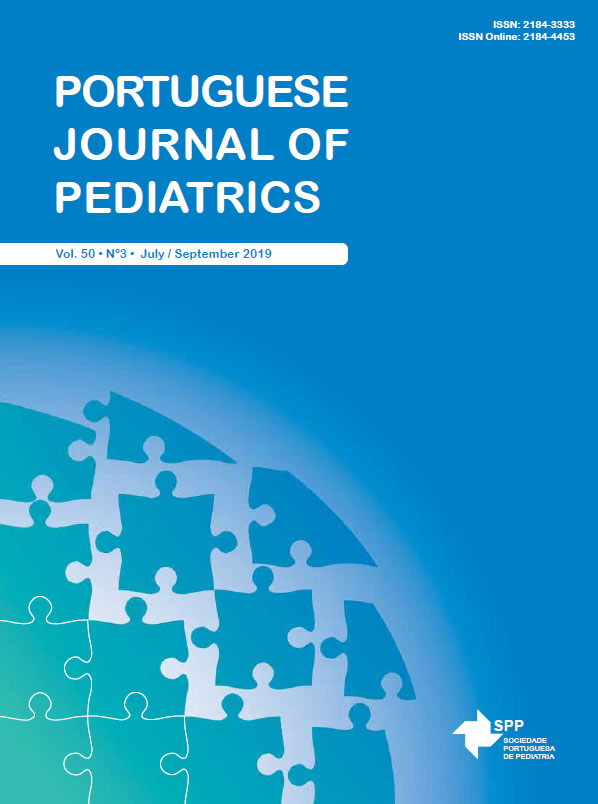Recovery of Head Circumference Z-Score in Healthy Very Preterm Infants at Term-Equivalent Age does Not Reflect Adequate Brain Growth
Date of submission: 15-10-2018 | Date of acceptance: 04-02-2019 | Published: 15-07-2019
DOI:
https://doi.org/10.25754/pjp.2019.15215Abstract
Introduction: Head circumference is widely used as a marker of brain growth in very preterm infants (VPT). We aimed to evaluate the progression of head circumference (HC), extra-cerebral space (ECS) and estimated brain volume (EBV) of VPT between birth and term equivalent age (TEA) in comparison to term-born controls.
Methods: We assessed prospectively a cohort of infants born at ≤32 weeks gestation and term control newborns. Infants with cerebral abnormalities were excluded. HC was measured at birth and TEA in preterm infants and at birth in term infants. ECS and EBV were estimated by a previously described ultrasonography model (Graça AM, Early Hum Dev 2013) applied on cranial ultrasounds performed during the first days of life (preterms and controls) and at TEA (preterms). Z-scores for HC were determined using Fenton 2013 growth charts and Z-scores for ECS and EBV were defined in controls.
Results: We assessed 105 infants (49 preterms and 56 controls). HC Z-scores increased significantly between birth and TEA and were identical to controls at TEA. ECS Z-scores increased significantly between birth and TEA and were higher at TEA than controls. EBV Z-scores decreased significantly between birth and TEA and were lower at TEA than controls.
Conclusion: Normal HC Z-score of healthy preterms at TEA does not reflect a brain sparing effect, as it is mainly due to an increase in extra-cerebral fluid rather than brain volume. Caution is advised when using HC as a marker of adequate brain growth in VPT, particularly when discussing outcomes with parents.









